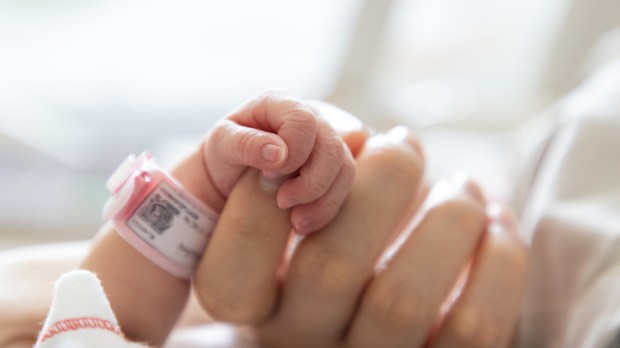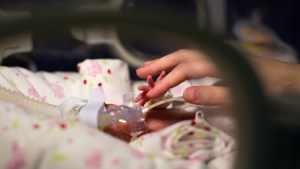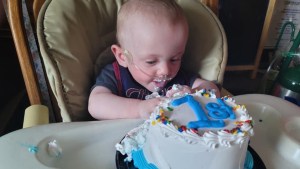I have read that a fetal death occurs every 16 seconds. So when one of our little fighters makes it to the finish line, they’re scoring a goal for the whole human race.
Preemie prizewinners
Curtis Means from the United States is the first-place finisher, born at 21 weeks of gestation, weighing 14.8 ounces.
His mother went into labor on July 4, 2020. It was a twin pregnancy. Doctors estimated that the children had a 1% chance of survival. In fact, his twin brother died within 24 hours, but Curtis was here to stay. He spent 275 days in the hospital, much of them in NICU. Today he’s a healthy baby, although with no other children having been born that prematurely it’s hard for doctors to make a prognosis of its long-term effects.
However, thanks to progress in medicine, more and more babies are surviving such premature births. In November 2022 in Murcia (Spain), a baby named Julieta came to score another goal for the human race. At 23 weeks and two days, she was the most premature baby to be born at that hospital.
She was met with a coordinated response from the neonatology service, the milk bank, specialized obstetric and neonatal teams, and a care plan focused on neurological development and protection.
Thanks to the attention she received from all of them for six months, Julieta is still with us, far surpassing the 18.5 ounces with which she arrived at birth.
Fetal development
Thinking of these brave little ones, I was curious to find out what level of sensitivity and what capacities babies have at 22 weeks of gestation. Consulting various pregnancy websites (Pampers, WhatToExpect, and TheBump, among others) reveals that a fetus at that point:
- is about the size of a papaya or a coconut
- has eyebrows, eyelashes, lips, and fingernails
- has developed the sense of touch and may grab the umbilical cord or suck their thumb
- is sensitive to light (even though their eyelids are still shut) and sound, and may react to the noise of an ultrasound.
Twenty-two weeks of development and a baby is already interacting with the world inside the womb!
Lives to be protected
We should encourage research on the development of fetuses at these early ages. Governments and organizations should dedicate resources so that all hospitals and ambulances have the necessary equipment for their care, such as cannulas in accordance with their small dimensions.
And, since we’re talking about a human being like the rest of us, shouldn’t it be clear even to those who are not fully pro-life that viable babies should be protected from being aborted? Those who argue that “in my body, I decide,” should have no objection to being separated from the baby … while it’s still alive. They may think it’s fair and legitimate to decide about their own body, but what about the other body, the other life? Don’t your rights end when the rights of others begin?
Let us defend our little ones and worry about guaranteeing them the most basic right, the right to life, whether the mother wants the baby or not. Do we promote neonatal research? do we help them with all possible means? If not, why?



